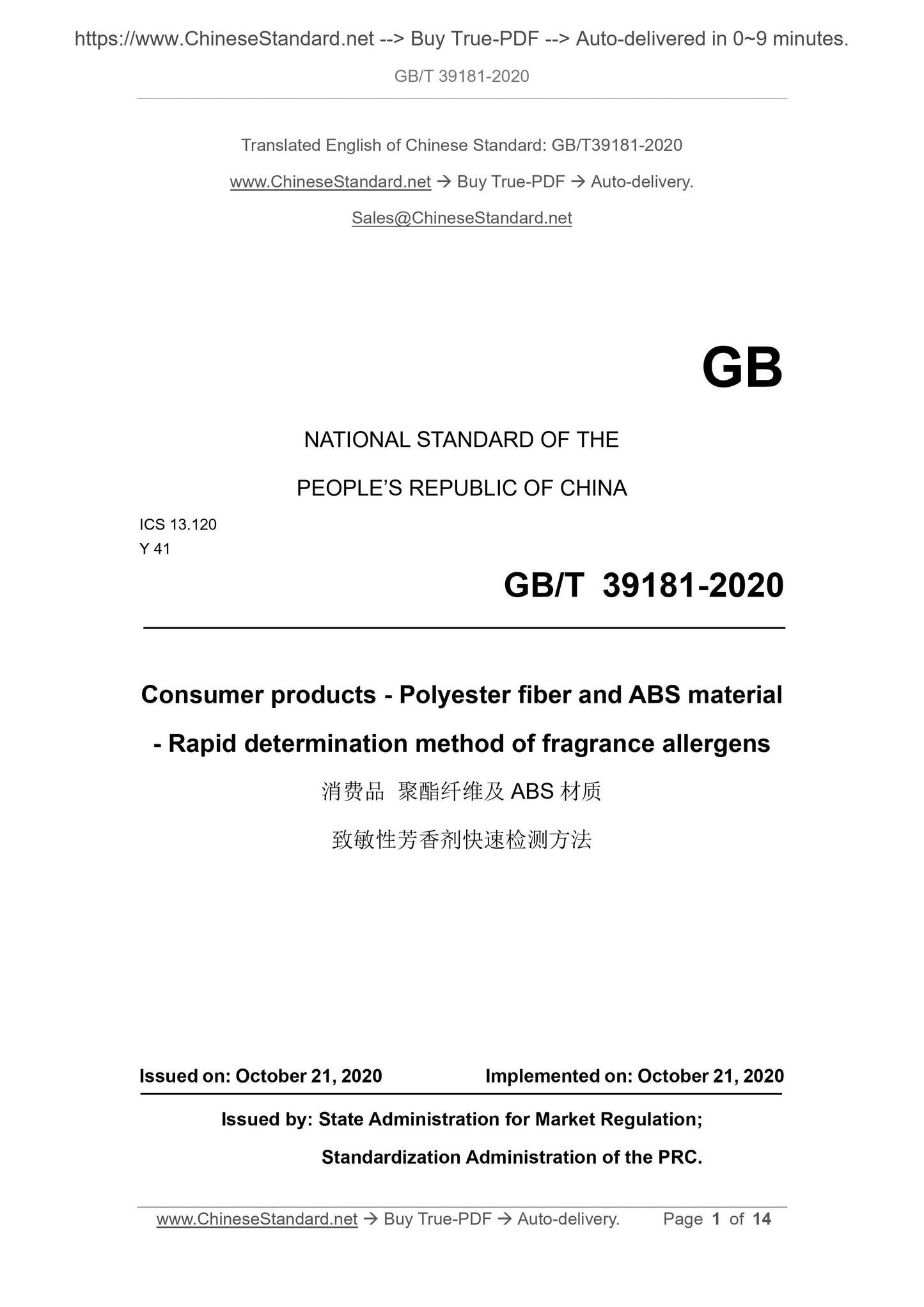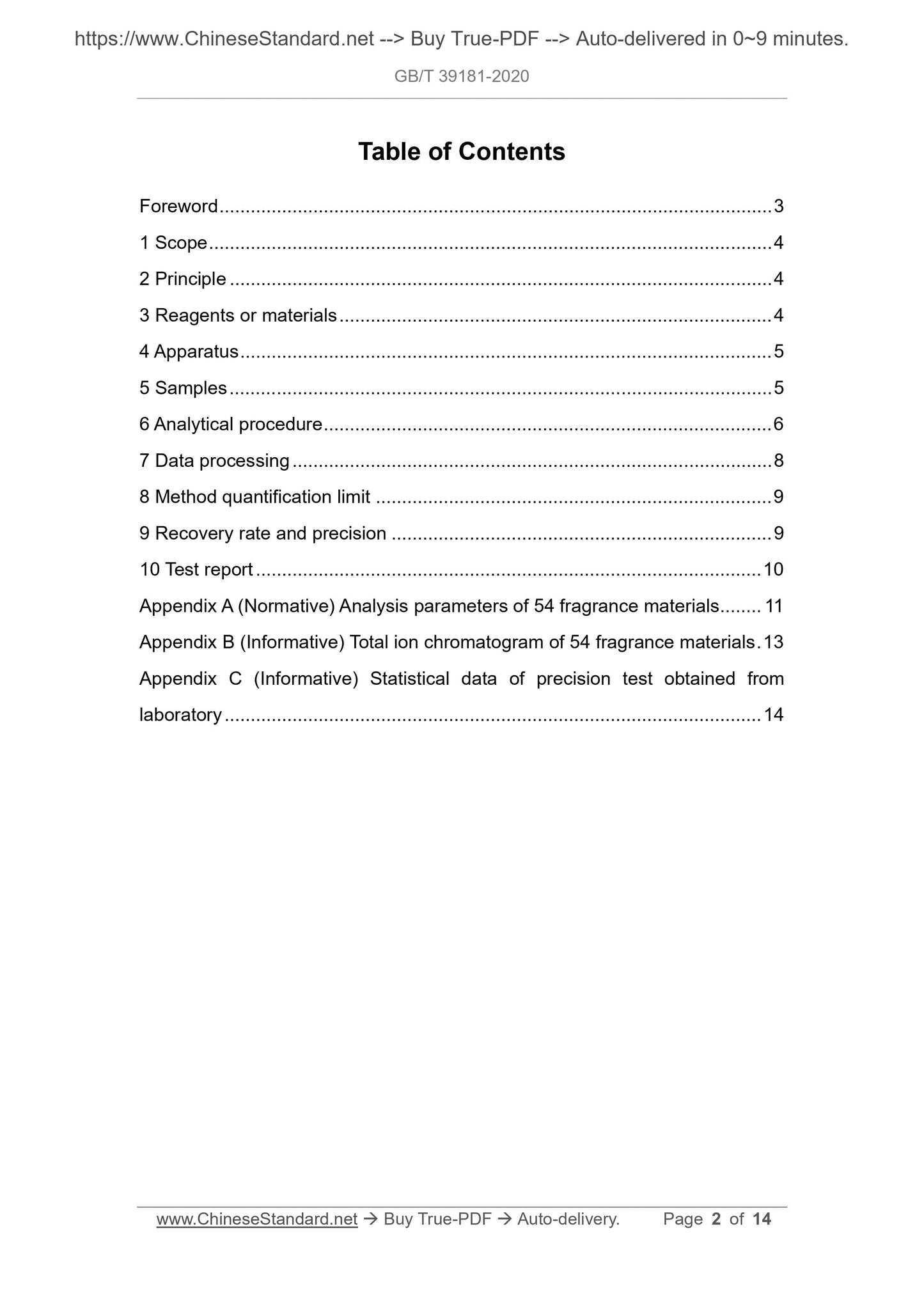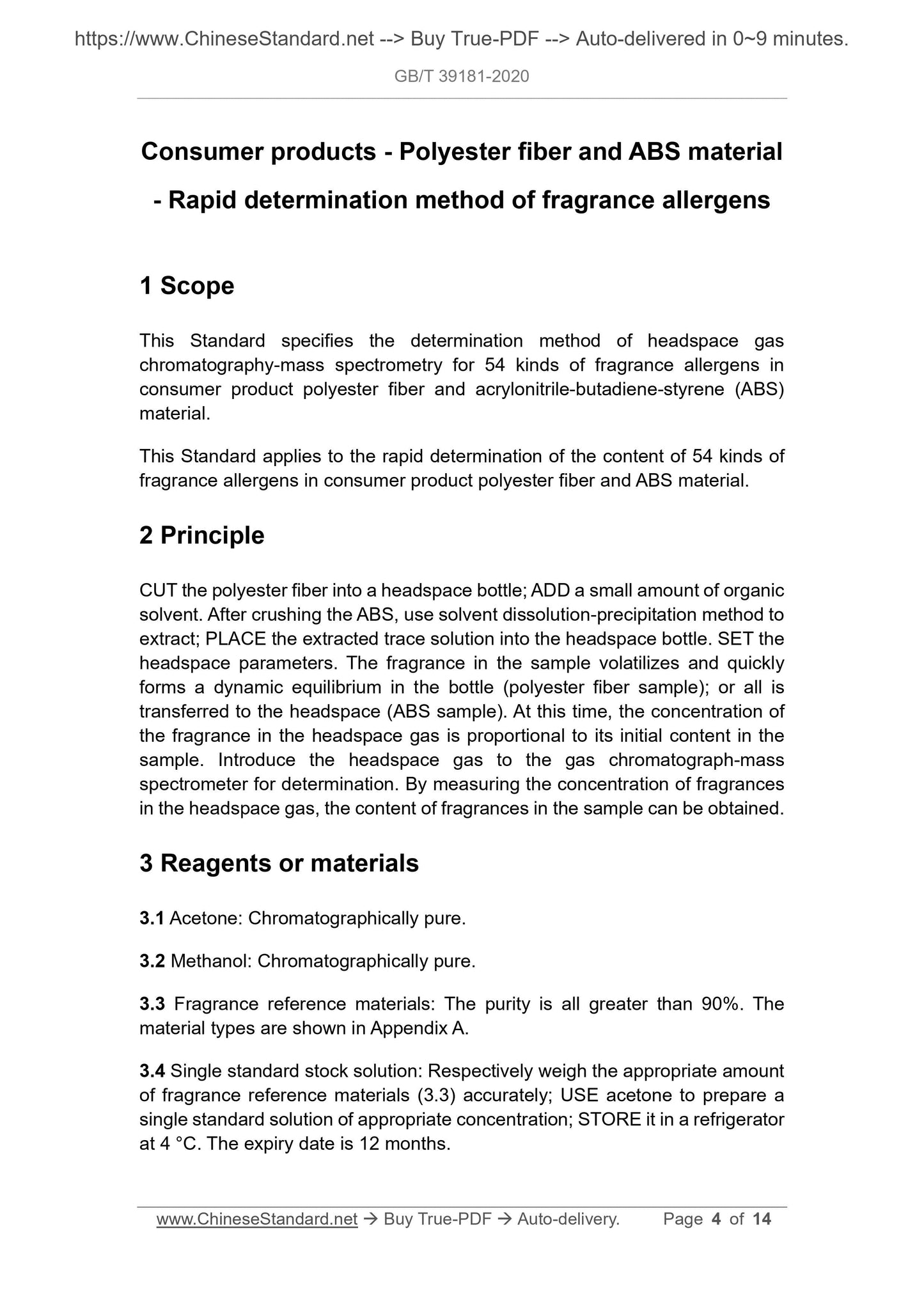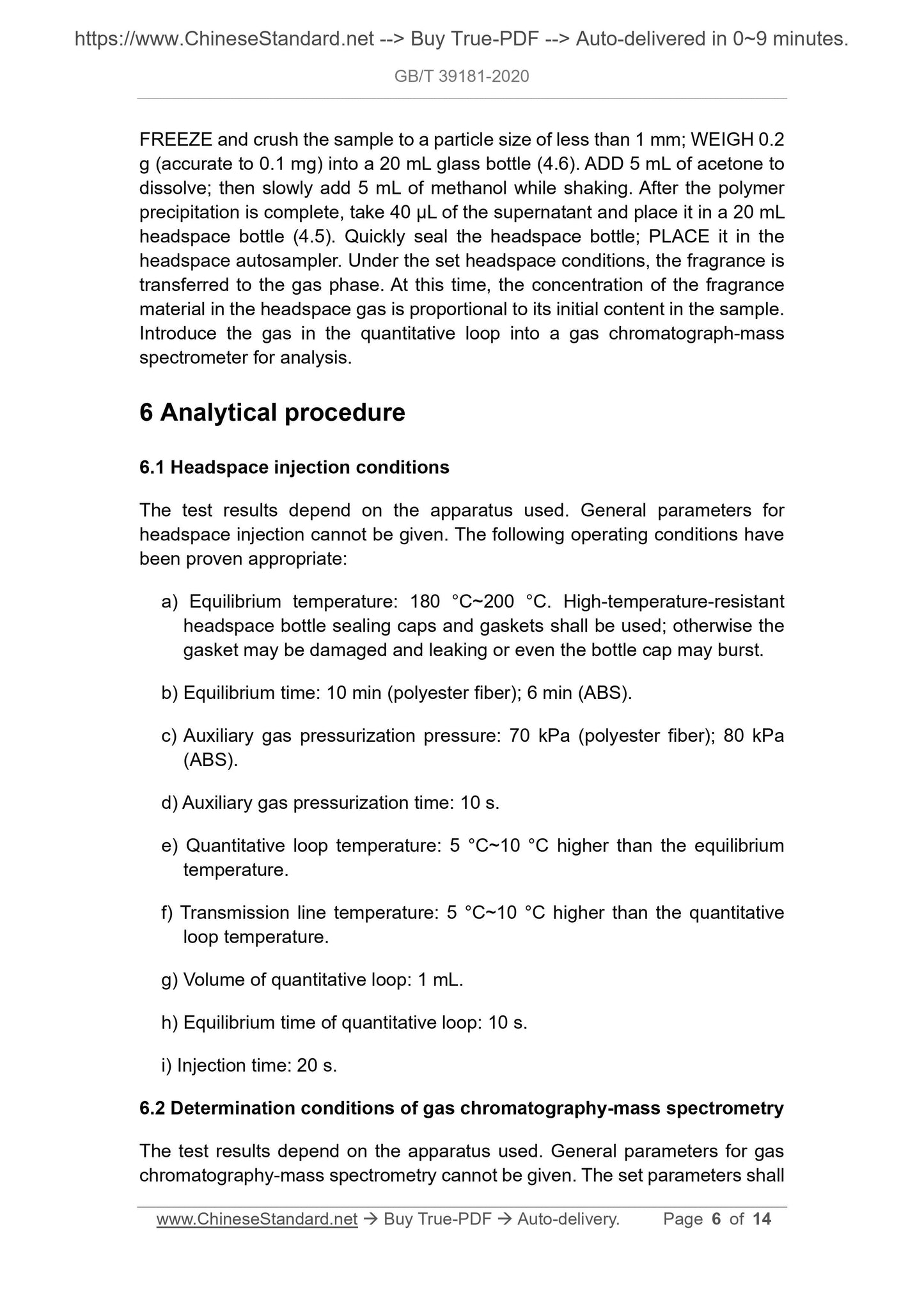1
/
of
5
www.ChineseStandard.us -- Field Test Asia Pte. Ltd.
GB/T 39181-2020 English PDF (GB/T39181-2020)
GB/T 39181-2020 English PDF (GB/T39181-2020)
Regular price
$205.00
Regular price
Sale price
$205.00
Unit price
/
per
Shipping calculated at checkout.
Couldn't load pickup availability
GB/T 39181-2020: Consumer products - Polyester fiber and ABS material - Rapid determination method of fragrance allergens
Delivery: 9 seconds. Download (and Email) true-PDF + Invoice.Get Quotation: Click GB/T 39181-2020 (Self-service in 1-minute)
Newer / historical versions: GB/T 39181-2020
Preview True-PDF
Scope
This Standard specifies the determination method of headspace gaschromatography-mass spectrometry for 54 kinds of fragrance allergens in
consumer product polyester fiber and acrylonitrile-butadiene-styrene (ABS)
material.
This Standard applies to the rapid determination of the content of 54 kinds of
fragrance allergens in consumer product polyester fiber and ABS material.
Basic Data
| Standard ID | GB/T 39181-2020 (GB/T39181-2020) |
| Description (Translated English) | Consumer products - Polyester fiber and ABS material - Rapid determination method of fragrance allergens |
| Sector / Industry | National Standard (Recommended) |
| Classification of Chinese Standard | Y41 |
| Classification of International Standard | 13.120 |
| Word Count Estimation | 14,192 |
| Date of Issue | 2020-10-21 |
| Date of Implementation | 2020-10-21 |
| Regulation (derived from) | National Standard Announcement No. 22 of 2020 |
| Issuing agency(ies) | State Administration for Market Regulation, China National Standardization Administration |
Share









